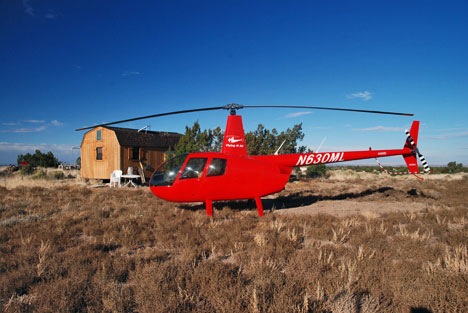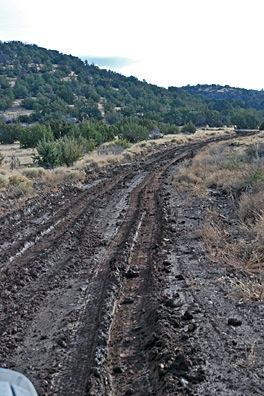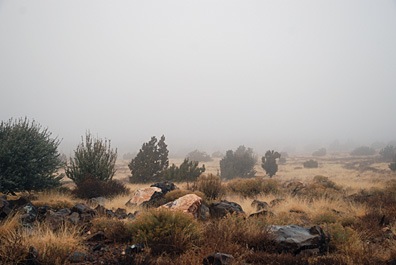Working out the kinks.
One of the improvements I made on my old RV was to add a solar panel to the roof. It was connected to a battery charger which, in turn, was connected to the camper’s batteries. When the sun was out — which is during most daylight hours here in Arizona — the batteries were charged. This made the camper extremely useful for off-the-grid camping. My husband and I did a lot of that last year on our way back from Washington to Arizona. We never ran low on power, which was a good thing because we didn’t have a generator.
There are a few things that won’t work in an RV without a connection to A/C power:
- A/C power outlets. This means you can’t plug in and use any device with a standard plug.
- Certain light fixtures. Some lights are A/C while some are D/C. A/C fixtures won’t work without an A/C connection.
- Microwave. Even if it’s standard equipment on an RV, it’s plugged into an A/C outlet.
- Air Conditioning. It’s A/C and it sucks a ton of power when it is plugged in and running. That means that even if you have a generator, you need a pretty powerful one to run the A/C when you’re not hooked up to campground or city power.
There are a few things that will run on propane or battery (D/C) power if you’re camping off-the-grid:
- Refrigerator. Setting the refrigerator on “Auto” tells it to look for A/C power first; if that’s not available, it uses propane from the onboard tanks (assuming the valves have been opened).
- Stove/Oven. Obviously, they’re propane. It would be dumb to put an electric stove in an RV.
- Water pump. If you’re not connected to a pressurized water line, a D/C pump activates when you run the water to pump the water from the onboard fresh water tanks.
- D/C devices. Some RVs include D/C outlets — think of power ports or cigarette lighters on a car. My old RV had one and I added a second; my new RV had three and I added a fourth. These are handy for charging cell phones or plugging in low wattage inverters to plug in low wattage A/C devices like laptops.
Other appliances use D/C power all the time, but if you’re plugged in, your battery is being charged all the time, so it’s no big deal. The heater, stereo, and certain light fixtures are good examples.
As you can see, RVs are pretty much designed to be self-sufficient when you’re off-the-grid. There’s a limit, of course, to how long you can live in an RV without a hookup, though. The solar power (or a generator) helps take care of electrical needs. Eventually, however, you’ll run out of water or fill up your black water sewer tank. There are ways to get around these issues — for example, minimize toilet use by using public toilets whenever possible, carry extra water in external tanks, etc. — so two people can easily live in a well-equipped RV off-the-grid for several weeks if they need to.
Oddly, however, most RV owners do not live in the RV off-the-grid. Instead, many of them tend to pull their RVs from one parking lot-like RV park to the next, cram them into narrow spaces between other RVs, hook up power, water, and sewer lines, and retreat inside their luxury boxes to watch television.
I’m not like most RV owners.
Before trading in the old camper, I pulled the 135-watt solar panel off the roof. This past week, I had it installed, with a new battery charger and controller, on the roof of my new RV.
This weekend, my husband and I are out in the desert about 25 miles west of our Wickenburg home, testing the trailer’s off-the-grid setup. I’m out in Aguila, at a private “resort” where my clients are testing some wireless networking equipment. The test requires me to fly their equipment around in the helicopter to see how well it works with ground-based mobile and stationary equipment. There’s more to it than that, but for the sake of my client’s privacy, that’s really all I’m willing to say.
 The job has a lot of down time — time when I’m just waiting around for them to be ready to fly. It made sense to bring the RV out here for the weekend. It gives Mike and I a chance to get away and relax away from home and we can bring along Jack the Dog and Alex the Bird. And, of course, we can test the off-the-grid setup of the RV close enough to home so that if there’s a serious problem, we’re not suffering. So the RV is currently parked about 100 yards from the helicopter’s landing zone out in the desert.
The job has a lot of down time — time when I’m just waiting around for them to be ready to fly. It made sense to bring the RV out here for the weekend. It gives Mike and I a chance to get away and relax away from home and we can bring along Jack the Dog and Alex the Bird. And, of course, we can test the off-the-grid setup of the RV close enough to home so that if there’s a serious problem, we’re not suffering. So the RV is currently parked about 100 yards from the helicopter’s landing zone out in the desert.
We’ve discovered a few things:
- When the refrigerator works off propane, it makes a noise that sounds like a fan running inside it. We’re not sure if it should be doing that. It seems to work fine and the fan noise does stop when the refrigerator reaches the correct temperature. But my last two RVs had silent refrigerators, so we’re a bit concerned.
- The fresh water in the tanks smells like shit. I do mean that literally. We’re not drinking it, but we are washing with it. It’s making the RV stink a bit on the inside, so we have a lot of windows open to keep the air cleared out. This is our fault. We should have flushed out the system before using it. We’ll do that after this trip and likely run at least one tankful of clean water through it, too.
- The new solar setup works great. It had the batteries fully charged before 10 AM. While it was doing that, we were using the lights, stereo, cell phone chargers (all D/C) and a 300-watt A/C inverter to charge my MacBook Pro and some aviation radios.
- The 2000-watt Honda generator I bought so I could run A/C devices if I wanted to works great. It’s easy to start and can be very quiet. We gave it a good test on Saturday night when we ran it to see if we could watch a DVD (Up) on the 32-inch (or thereabouts) flat screen TV the RV came with. It ran hard when we first started it — likely to recharge the batteries we’d run down a bit after sunset while giving us A/C power — then settled down to a lower, quieter power setting. I don’t think I’d run it in the future just to watch TV, though.
Everything else works exactly as expected.
At this point, I consider this second test a success. It proves to me that the new RV can be at least as comfortable — more so, of course — than the old one when camping off-the-grid. Even though I didn’t get the solar power system I wanted, I think my less expensive solution — one solar panel to charge the batteries and a portable generator for more power when needed — will work fine.
One thing’s for sure: having a portable house along on these weekend long gigs is very nice indeed — even if I’m not plugged in.

 But it was the 360° views that sold me. To the north, is Red Butte and the North Rim of the Grand Canyon. To the west and northwest, are distant mountain ranges near Seligman, as well as Mount Trumbull on the Arizona strip 85 miles away. To the south is Bill Williams Mountain, just south of Williams. And to the east is snowcapped Mount Humphreys and the San Francisco Peaks, the tallest mountain in Arizona.
But it was the 360° views that sold me. To the north, is Red Butte and the North Rim of the Grand Canyon. To the west and northwest, are distant mountain ranges near Seligman, as well as Mount Trumbull on the Arizona strip 85 miles away. To the south is Bill Williams Mountain, just south of Williams. And to the east is snowcapped Mount Humphreys and the San Francisco Peaks, the tallest mountain in Arizona. So we come up here on the occasional weekend and soak up the silence or the sound of the wind. If the nights are moonless, we can see almost as many stars as Hubble — or at least it seems that way — along with the distant glow of Las Vegas, 173 air miles away. Jack the Dog spends most of his time investigating the rocks, looking for lizards or pack rats, or chasing rabbits. Alex the Bird hangs out in his cage, playing with his toys and whistling along to the music on my iPod. Mike and I go for walks or do odd maintenance tasks to keep our camping shed in good condition. Sometimes we’ll go for lunch and a walk along the rim at the Grand Canyon. Other times, we’ll drive out to Flagstaff for some Thai food and to pick up some odds and ends in Home Depot or the RV repair shop. Still other times — like this weekend — we’ll just lounge in the shade on the camping shed’s “porch,” reading or talking.
So we come up here on the occasional weekend and soak up the silence or the sound of the wind. If the nights are moonless, we can see almost as many stars as Hubble — or at least it seems that way — along with the distant glow of Las Vegas, 173 air miles away. Jack the Dog spends most of his time investigating the rocks, looking for lizards or pack rats, or chasing rabbits. Alex the Bird hangs out in his cage, playing with his toys and whistling along to the music on my iPod. Mike and I go for walks or do odd maintenance tasks to keep our camping shed in good condition. Sometimes we’ll go for lunch and a walk along the rim at the Grand Canyon. Other times, we’ll drive out to Flagstaff for some Thai food and to pick up some odds and ends in Home Depot or the RV repair shop. Still other times — like this weekend — we’ll just lounge in the shade on the camping shed’s “porch,” reading or talking. N630ML at Howard Mesa, November 2008
N630ML at Howard Mesa, November 2008 Here’s almost the same view today. This is normal weather here — blue skies and almost unlimited visibility. Although this photo is a bit too small to see it, Mount Trumbull, which is about 80 miles away, is visible just left of center on the horizon. We can also see the North Rim of the Grand Canyon (which is higher than the South Rim) about 40 miles away.
Here’s almost the same view today. This is normal weather here — blue skies and almost unlimited visibility. Although this photo is a bit too small to see it, Mount Trumbull, which is about 80 miles away, is visible just left of center on the horizon. We can also see the North Rim of the Grand Canyon (which is higher than the South Rim) about 40 miles away. Mike shot this photo of Mount Kendricks (left) and the San Francisco Peaks (right) a little while ago. Both mountains got snow yesterday, although kendricks only got a dusting of it. If you’re not familiar with the San Francisco Peaks, Mount Humphreys, which is the tallest of the peaks, is the tallest mountain in Arizona. Don’t quote me, but I believe it’s somewhere around 12,000 feet. (No access to the ‘Net right now, so I can’t look it up).
Mike shot this photo of Mount Kendricks (left) and the San Francisco Peaks (right) a little while ago. Both mountains got snow yesterday, although kendricks only got a dusting of it. If you’re not familiar with the San Francisco Peaks, Mount Humphreys, which is the tallest of the peaks, is the tallest mountain in Arizona. Don’t quote me, but I believe it’s somewhere around 12,000 feet. (No access to the ‘Net right now, so I can’t look it up). And because I can’t resist, here’s a sunset photo taken on Friday evening. Clouds (or particulates in the air) are what makes for nice sunset photos. I rarely get an opportunity to take a decent sunset photo because there are rarely any clouds in the sky in Arizona. But there were clouds Friday and I snapped a few shots from right outside the camping shed. The mountains silhouetted on the horizon are about 50 miles away, near Seligman, AZ.
And because I can’t resist, here’s a sunset photo taken on Friday evening. Clouds (or particulates in the air) are what makes for nice sunset photos. I rarely get an opportunity to take a decent sunset photo because there are rarely any clouds in the sky in Arizona. But there were clouds Friday and I snapped a few shots from right outside the camping shed. The mountains silhouetted on the horizon are about 50 miles away, near Seligman, AZ. We made the turn off pavement and started the five mile trek up to our mesa-top retreat. We’d gotten about 2 miles in when the road’s surface started getting snotty. That’s really the only way to describe the reddish brown dust when it gets wet enough to make mud. Soon, it had coated the truck’s tires and we were starting to fishtail. Mike put the truck in 4WD. We continued up a gentle grade. The truck would not stay pointed in the right direction. This was not a good thing since (1) the road was only a tiny bit wider than a single lane and (2) there was a deep ditch on one side with water flowing in a shallower ditch on the other side. The photo here shows what it looked like the next day, after at least two other vehicles had passed through. By this time, the snot had solidified a bit and the road was passable again.
We made the turn off pavement and started the five mile trek up to our mesa-top retreat. We’d gotten about 2 miles in when the road’s surface started getting snotty. That’s really the only way to describe the reddish brown dust when it gets wet enough to make mud. Soon, it had coated the truck’s tires and we were starting to fishtail. Mike put the truck in 4WD. We continued up a gentle grade. The truck would not stay pointed in the right direction. This was not a good thing since (1) the road was only a tiny bit wider than a single lane and (2) there was a deep ditch on one side with water flowing in a shallower ditch on the other side. The photo here shows what it looked like the next day, after at least two other vehicles had passed through. By this time, the snot had solidified a bit and the road was passable again. In the morning, when it got light, we were in a fog bank. We could see the clouds move in, then clear. It was all quiet except the sound of coyotes off in the distance.
In the morning, when it got light, we were in a fog bank. We could see the clouds move in, then clear. It was all quiet except the sound of coyotes off in the distance.